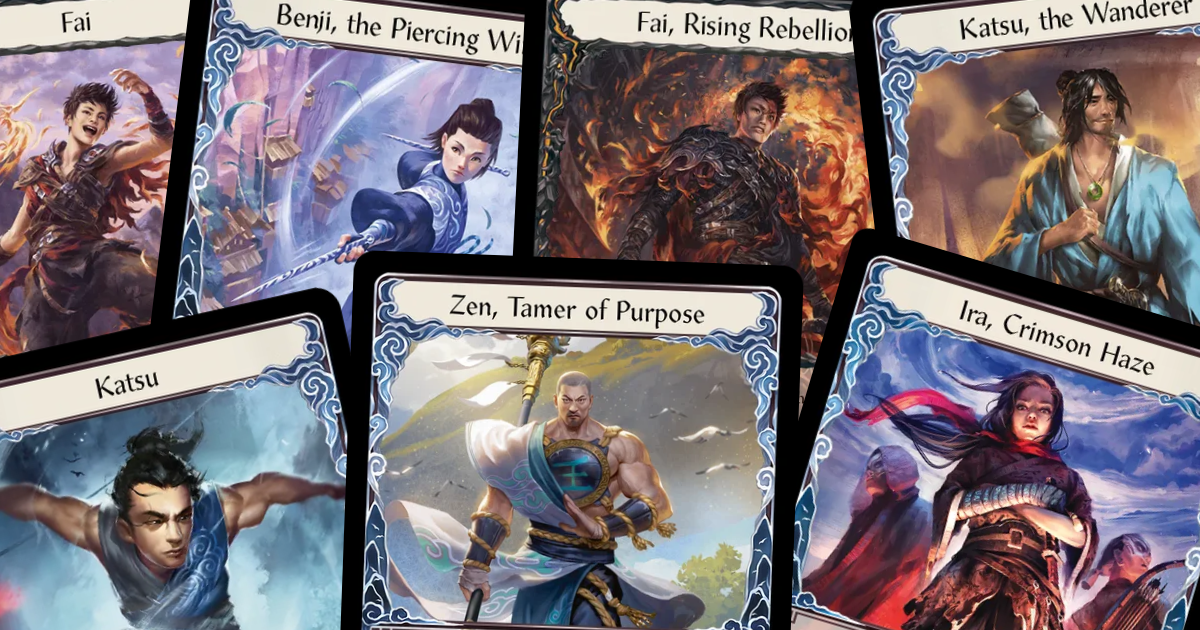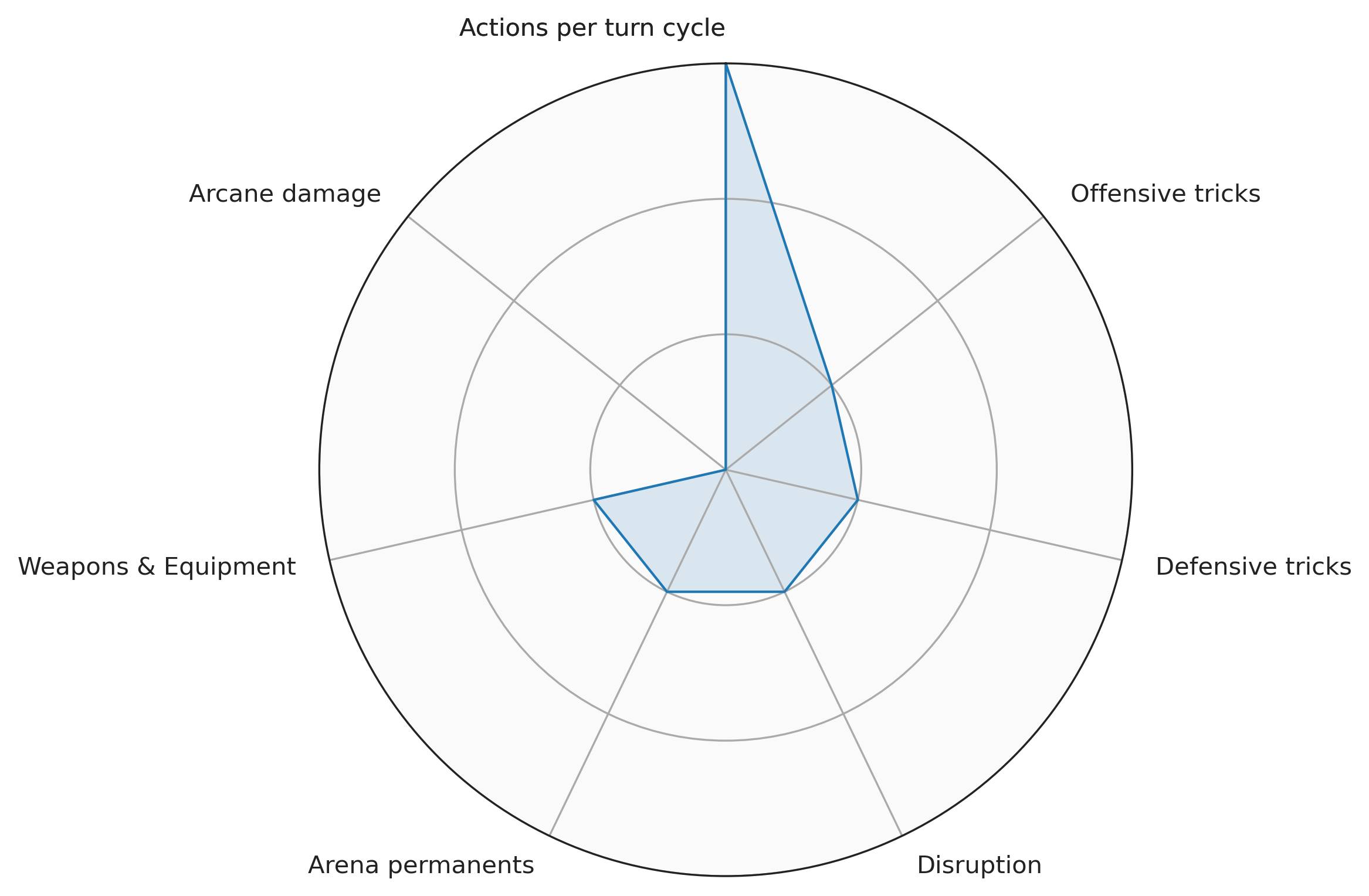ClassID - Ninja
For the first class profile in the ClassID series, I wanted to return to the original Flesh and Blood set, Welcome to Rathe. Why? Well, as the first product, it is designed in such a way that it is clear from the get-go which playstyle each hero represents. Additionally, of the four classes in this set - Brute, Guardian, Ninja, Warrior - the designers chose the Ninja class to represent the game in the tutorial deck, in the form of Ira, Crimson Haze, presumably because the class relies heavily on one of the most central mechanics in the game: the combat chain. Since this class was the starting point for so many players, it also seems like the perfect class to launch this series. Coincidentally, Ninja is the only one of the four original classes to show up in the upcoming set, Part the Mistveil, after Heavy Hitters featured the other three, so maybe this article can help you to figure out what you might expect from the Mystic Ninja Zen.
Death by a Thousand Cuts
The Ninja class is the game’s embodiment of “death by a thousand cuts”. Ninjas don’t throw big haymakers. Instead, they focus on chaining together multiple small attacks with go again to overwhelm their opponent with a flurry of attacks. Since you only get 4 cards each turn, this makes it impossible for the opponent to defend all of the attacks once the blocking capabilities of their equipment have been expended. This approach is perfectly encapsulated in Katsu’s signature weapon, the Kodachi, and Fai’s complementary ability card, Phoenix Flame. Kodachis turn your pitch card into at least two 1-damage attacks, i.e. you are exchanging one card for two attacks. Since a card’s defence value cannot be split to cover multiple smaller attacks, this allows the Ninja player to play their turn in such a way that the opponent will be very hard-pressed to cover up all of the damage. Similarly, Fai can extend his chain of attacks with Phoenix Flame at a low cost or even for free, again making it easy to present more than 4 attacks in a single turn.
Furthermore, Ninjas care about the number of attacks they chain together uninterrupted, as well as sequencing their attacks correctly. In the untalented card pool, the latter trait is represented by the combo keyword. Cards with the combo keyword, like Whelming Gustwave, are generally below rate, e.g. Whelming Gustwave is a 0-cost 3-attack, unless they are a direct follow-up to a named card. If they are, their combo effect brings the card from below rate to above rate: if Whelming Gustwave is played after Surging Strike, it becomes a 0-cost 4-attack, which would be on rate, but gains go again and an on-hit effect on top of that. On the other hand, a great example of the importance of the number of attacks is Flying Kick. Again, this card is below rate but becomes above rate when preceded by at least two other attacks. This property of the Ninja class is even more pronounced for the Draconic Ninja Fai, both in his hero ability, which becomes cheaper the more (Draconic) attacks you have chained together, and in the Draconic talent’s rupture keyword. This keyword rewards players for stringing together 4 or more attacks, and thus pairs well with Ninja’s playstyle.
Finally, Ninjas want to hit. A lot. Not for much, but ideally with every attack. This is clear from the number of Ninja cards that feature an on-hit effect, often paired with combo, or cards like Torrent of Tempo, which only let you continue your turn if they hit. Furthermore, cards like Salt the Wound become stronger the more you have hit this turn, and Ninja’s iconic head gear, Mask of Momentum, also offers a clear incentive to hit: if you hit three times in a row, you draw a card, which is probably another attack! To push their attacks to hit, the Ninja class features a few combat tricks like Ancestral Empowerment or Breaking Scales, but their buffs are generally small and you won’t have them every turn.
Ninja’s radar chart
So how would I rate the Ninja class on each metric introduced in this series’s introductory article? Here’s my chart:
Starting at the top and going clockwise, here is the motivation for each score.
- Of all the classes in the game, Ninjas are able to establish long combat chains the most consistently. Most of their attacks are low-cost and regularly feature go again inherently or if some condition is met (e.g. combo). The trade-off here is that the combo starters, i.e. the cards that the combo mechanic refers to, typically only block for 2 rather than the usual 3. This defining trait results in an aggressive playstyle because your cards are worth more when used offensively rather than defensively. Blocking individual attacks is further complicated for your opponent due to attacks presenting breakpoints (i.e. attack values are 1 more than a multiple of 3) or just being annoying to deal with, like Kodachis.
- Though the class features some offensive tricks, like the Ancestral Empowerment and Breaking Scales cards mentioned earlier, they do not feature prominently in the every-turn play patterns. Instead, they are more of a looming threat that keeps the opponent guessing whether the Ninja player has it this turn or not. Furthermore, the buffs typically just push the attack barely over the edge with a single point of damage, just to squeak out the value of an on-hit effect or a Mask of Momentum trigger.
- It already came up previously, and I stand by the statement that the Ninja class is typically offensively oriented. However, I have to give the Ninja class a point in defensive tricks for the existence of a contender for best defense reaction in the game: Flic Flak (you can quite safely ignore the other Ninja defense reactions). Turning a card with combo into a 5-block is some of the best value you can get against go-wide decks.
- Though the Ninja class is more of a numbers class, trying to push through damage with multiple difficult-to-block attacks, they have access to a few disruptive cards. The most egregious one is probably Dishonor, though Recoil and Cyclone Roundhouse also come to mind. All three rely on combo, and thus require you to jump through some hoops.
- Permanents are definitely not a class strength, but Ninjas have one item at the time of writing (Silverwind Shuriken) and hence I cannot give them a zero rating, technically.
- As you might expect from an agile Ninja, this class does not dress in heavy armour that would hinder their movement. Though the class has some of the best effects in the game printed on their head equipment pieces (Mask of Momentum and Mask of the Pouncing Lynx), their equipment does not defend well, especially if you consider that every piece that blocks more than 1 has blade break (i.e. you lose it after defending with it). Their weapons are also nothing special to write home about.
- This is a martial class. No arcane damage here.
Who is the Ninja class for?
In summary, the Ninja class is for players who like to be the aggressor. By stringing together more attacks than your opponent has cards, you ensure that damage is leaking through every turn. To push the class to its limits though, you have to sequence your plays correctly to squeeze out every slim margin you can get. After all, you are rewarded for hitting, however small of a dent you make. In addition, if you hit often enough, you get to play even more cards!

